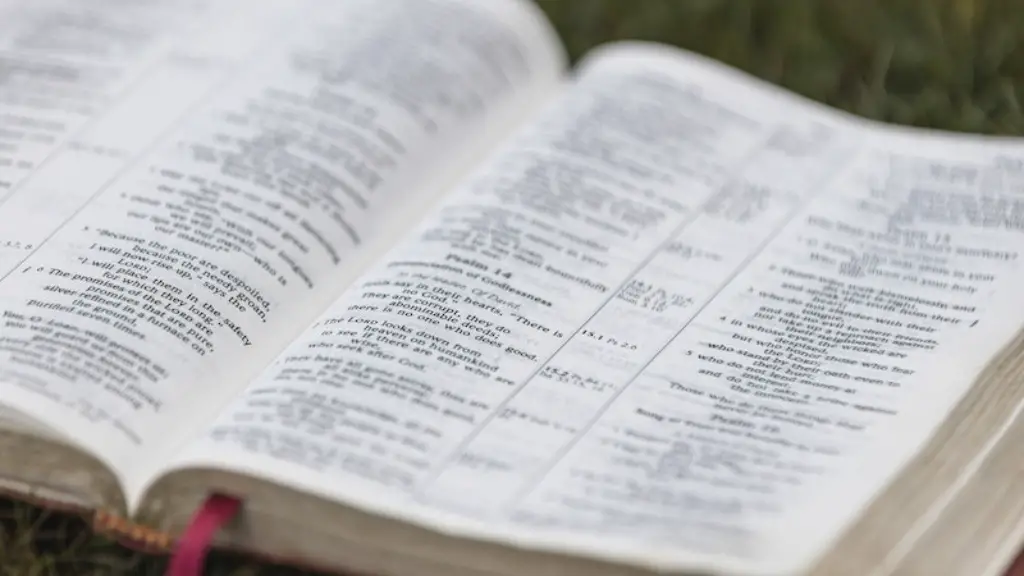Effects of Anaphora in Poetry
Anaphora, a literary device that adheres to repetition of words in successive clauses or phrases, is a common element found throughout poetry. It is used to create rhythmic effects and build emphasis, aiding in constructing an atmosphere of power and strength to the literature presented.
Anaphoric devices draw the readers’ attention to the words being repeated, inspiring an emotional and mental reaction. This repetition has the power to build anticipation and excitement, setting the tone for the general mood of the poem and the narrative within it.
Poets such as Allen Tate and Joseph Brodsky have noted that Anaphora proffers a codified structure for the poem, one that directs the readers where to put emphasis and lends an arcane distinction to the poem without embellishing an excessive amount of values.
Due to the emphasis it creates anaphora serves as an effective technique to draw attention to certain points and give clarity to a particular image. For example, ‘I shall be satisfied when I wake in thy likeness’ draws attention to the idea of salvation while ‘verily verily, I say unto you’ connotes the importance of faith.
Anaphora is effective in conveying values and inserting sentiments into poems. It provides the words of the poem depth and meaning, and it enables a clever twist to the poem’s narrative. Its oscillation of lines allows for imagery to be communicated in a gentle, pleasurable way which aids in the delivery of a story.
Anaphora has become so ubiquitous in a variety of forms of literature, from spiritual hymns to secular poetry, that some critics have suggested that the power of anaphora may be waning due to its overuse and absence of originality.
Symbolic and MetaphoricUse of Anaphora
Anaphora also serves as an effective tool to create metaphor and symbolism in poetry. By repeating certain words and sentences, the poet can draw attention to the imagery conveyed in that particular phrase without having to greatly elaborate.
Symbolism and metaphor can offer subtle and powerful ways to enhance the narrative of a poem without losing its continuity and cohesion. This can help to create powerful scenes and serve as a sturdy platform to convey the poem’s theme.
Furthermore, certain poets use anaphora to express ideas that are common in both language and thought. This can be seen in Emily Dickinson’s ‘I heard a Fly buzz – when I died’, in which she uses anaphora to allude to a universally-understood cycle, that of life and death. By repeating the phrase ‘And then’ several times, she infers the common idea that death is inevitable
Anaphora is also the perfect tool for poets seeking to portray a kind of reliance that transcends the temporal or physical. For instance, a poet could use anaphora to emphasize a desire to be reunited with a loved one in a way that can perfectly embody both a physical as well as a metaphysical yearning.
Unique Effects of Anaphora on Readers
Anaphora creates an emotional response in the reader, evoking feelings of excitement, anticipation, and clarity. By emphasizing certain words and phrases, anaphora helps the reader connect the poem’s narrative with their own feelings and values.
Anaphora can help the reader visualize the poem and build a mental image that is filled with both the emotions and ideas of the poem. The repetition of words and phrases can also create a sense of continuity, allowing the reader to better understand the poem’s overall message.
Anaphora can also heighten the emotional impact of a poem. By emphasizing specific words and phrases, the poet can convey a powerful emotional message that resonates with the reader. For example, ‘The world is too much with us’ uses anaphora to emphasize the idea of an overwhelmed and troubled world, drawing the reader into the emotions conveyed in the poem.
Anaphora is also an effective tool for crafting a rhythmic pattern in a poem, aiding in the flow of the poem’s words. This helps to create a more engaging reading experience, as the poem’s words will play out like music.
Examples of Anaphora in Various Literary Works
Anaphora can be seen throughout a variety of works, from theatrical plays to classical poetry. Examples include Robert Frost’s ‘The Road Not Taken’, Shakespeare’s ‘Othello’, and William Butler Yeats’ ‘The Second Coming’. Each of these pieces utilizes anaphora to add depth and meaning to the work and to create strong visual imagery for the reader.
Anaphora can also be found in modern poetry and prose, with notable examples including T.S. Eliot’s ‘The Love Song of J. Alfred Prufrock’, Sylvia Plath’s ‘Lady Lazarus’, and W.B. Yeats’ ‘The Lake Isle of Innisfree.’ Anaphora enables these writers to create vivid passages that evoke strong feelings in the reader.
Many contemporary song writers also employ anaphora in their lyrics, with notable examples including ‘American Pie’ by Don McLean, ‘Believe’ by Cher, and ‘Family Affair’ by Mary J. Blige. Using anaphora in popular song lyrics can create a sense of repetition and familiarity with the song, allowing it to become a classic.
Anaphora in Different Cultures
Anaphora is utilized in various cultures for different reasons, demonstrating the importance of this technique in literature. In Western literature, anaphora has been used to build tension, convey meaning, and create rhyme and rhythm in poems. In eastern literature, anaphora has been used to emphasize certain ideologies, convey spiritual messages, and engage with the past. In many cultures, anaphora is seen as a form of honoring the past and creating a sense of reverence for the dead.
In ancient greek literature, anaphora was commonly used in epics, plays, and other works of literature. The earliest surviving example of anaphora is found in Homer’s Odyssey, in which he utilizes the technique to emphasize the importance of Penelope’s faithfulness and Odysseus’ courage.
In religious literature, anaphora can be seen in hymns, prayers, and various religious texts. It is often used to emphasize important values and beliefs, as well as to communicate spiritual messages. Anaphora can also be seen in various religious ceremonies, such as weddings and funerals, as it is believed to convey the emotions and messages that are being conveyed.
Conclusion
Anaphora is an important technique in poetry and other forms of literature, aiding in conveying themes, creating imagery, and evoking emotions in the reader. By stressing certain words and phrases, anaphora can bring clarity and understanding to a poem and create a powerful atmosphere within it. Anaphora is a versatile tool that can be used in different cultures for various reasons, demonstrating its importance and versatility in literature.





